FW at 90: The best tractor of the past 90 years revealed
It is tempting to look back misty eyed at the good old days, when farming was simpler and tractors only had the basics to get the job done.
But which decade really did produce the finest example of agriculture’s greatest mechanical ally?
When Farmers Weekly first rolled off the printing press in June 1934, petrol and tractor vaporising oil (TVO) were the predominant power sources, new-fangled pneumatic tyres were just arriving, and Harry Ferguson was in the early stages of introducing his game-changing three-point linkage.
See also: Best sellers: Our top 10 tractors of the noughties
The next few decades saw wider adoption of diesel engines and hikes in power and performance.
Though it wasn’t until the 1970s that safety cabs and four-wheel drive systems lay the foundations for the modern tractors we drive today.
Scores of landmark models have been produced during this period, making the task of picking a winner particularly challenging. The only fair way of whittling them down was putting it to a vote from you, our dear readers.
Having enlisted the help of a panel of experts to compile a shortlist of the most influential tractors of the past 10 decades, we published a poll on our website, FWi.
Thousands of you responded, revealing some clear frontrunners, almost all of which were produced by three core brands.
This might make for a less colourful display in the following pages, but it serves as a reminder of how a few key players have dominated the tractor market over the years.
1930s: Fordson Model N Standard
- Year launched 1929
- Engine 4.4-litre, four-cylinder petrol/ petrol TVO
- Power 27hp
- Transmission Three-speed manual
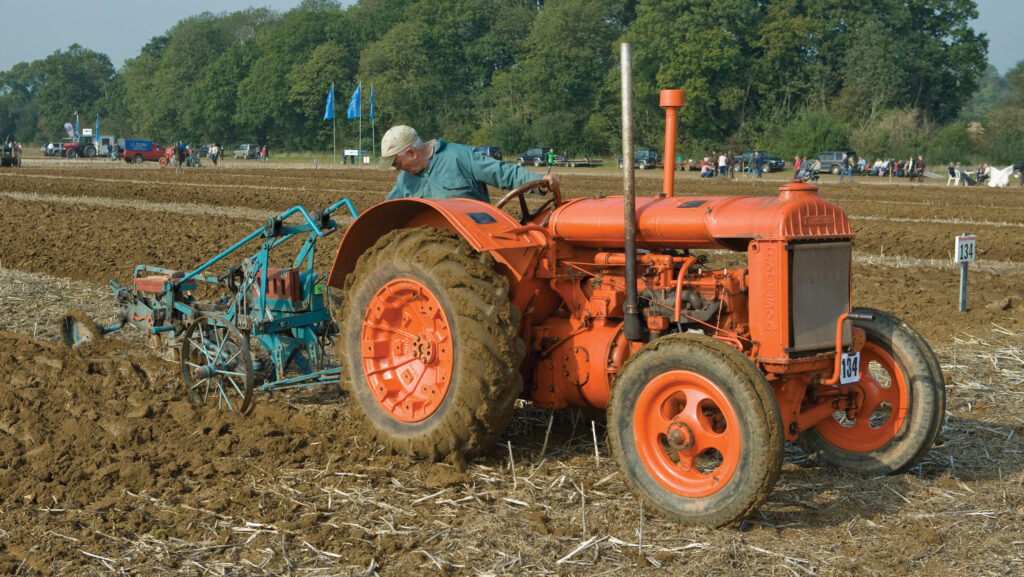
© Noel Bridgeman/Alamy Stock Photo
Introduced at a time when implements were still pulled by horses on most farms, Fordson’s Model N Standard was pivotal in the nation’s transition to tractor power.
Launched in 1929, it took over from the Model F, which itself was a landmark machine. Created by Henry Ford, this was agriculture’s answer to the Model T car, bringing mass-production and affordable prices to the world of farm mechanisation.
The Model N improved on the design, adding an extra 3hp and gaining mod cons such as pneumatic tyres and a pto during its lengthy production run. By the time this ended in 1945, Fordson had made almost a quarter of a million examples.
Built tough and simple, these tractors gave years of dogged service. And with a ready supply of parts, farmers could keep them running on a shoestring.
But perhaps the Model N’s greatest legacy is the role it played in feeding the nation during the grim years of the Second World War.
With its four-cylinder petrol engine – petrol TVO on later examples – delivering 27hp to the rear wheels, far more land could be worked far more efficiently than with the heavy horses they replaced.
Other contenders: Ferguson-Brown Model A, Marshall 15/30 Model M, Oliver 90
1940s: Overall winner Ferguson TE20
- Year launched 1946
- Engine 2-litre, four-cylinder petrol, petrol TVO and diesel
- Power 20hp
- Transmission Four-speed manual
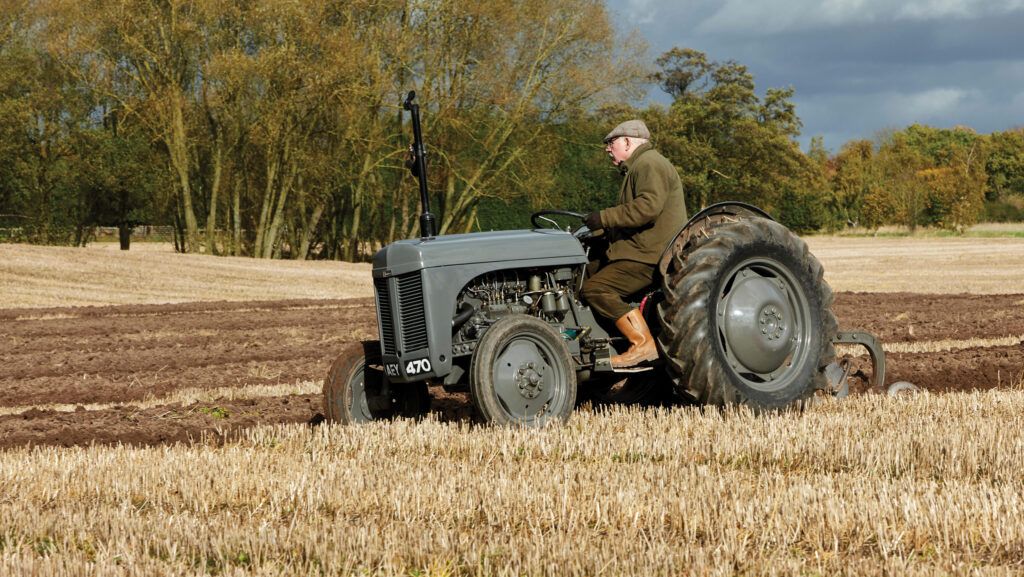
© Jon Lewis/Alamy Stock Photo
When Harry Ferguson first penned the designs for his hydraulic three-point linkage, he could have had little idea that his invention would remain a core tractor feature almost 100 years later.
British farmers’ first proper introduction to this game-changing piece of technology came with the Ferguson TE20, known more affectionately as the “Little Grey Fergie”.
This first rolled off the production line of Standard Motor Company’s Coventry factory in 1946 – which Ferguson had struck a manufacturing deal with – and it was indeed little.
But despite its diminutive proportions, the innovative design allowed it to outperform models far larger in stature.
Chief among these was the Ferguson System three-point linkage with draft control, but it also had a shaft-driven pto and a dependable four-cylinder engine.
Early TE20 models came fitted with a Continental petrol power plant, while later TEAs and TED examples ran on petrol and petrol TVO blocks respectively, both of which were built by Standard Motor Company.
By 1951 there was also a TEF diesel version.
Production of TE20 tractors continued until 1956, when they were replaced by the also highly successful Massey Ferguson 35.
Other contenders: E27N Fordson Major, David Brown Cropmaster, Massey Harris Diesel Tractor
1950s: Fordson E1A New Major
- Year launched 1951
- Engine 3.6-litre diesel, petrol and petrol TVO
- Power 42hp
- Transmission Six-speed manual with two reverse gears
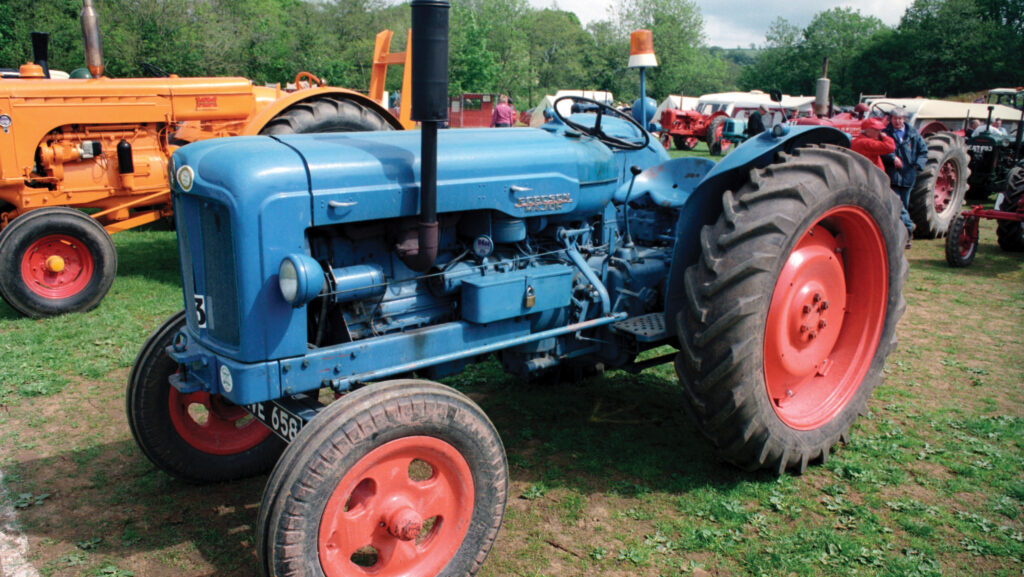
© QEDimages/Alamy Stock Photo
Revealed at the 1951 Smithfield Show, the E1A New Major ushered Fordson into a new era with a design that was far more modern than its E27N predecessor.
Big selling points for the New Major were its trio of in-house four-cylinder engines – diesel, petrol and petrol TVO – all of which used the same block and common components to reduce manufacturing costs and ease maintenance.
It also came with a six-speed manual transmission, complete with two reverse ratios, and, just like its TE20 rival, the option of both a pto and hydraulic “power lift” three-point linkage.
With petrol models packing 40hp and diesels good for 42hp, it was a gutsy machine in its day and Fordson’s advertising boasted that it could “tackle three- to four-furrow ploughing with ease”.
But, just as importantly, it was built tough. So tough that many examples stood up to decades of hard use and abuse and are still going strong today.
The New Major was a huge sales success and paved the way for the Power, Super and New Performance models that followed.
Other contenders: Fordson Dexta, International B250, Doe Dual Drive (Triple D)
1960s: Massey Ferguson 135
- Year launched 1964
- Engine Perkins 2.5-litre, three-cylinder diesel
- Power 45hp
- Transmission Six-speed manual with two reverse gears
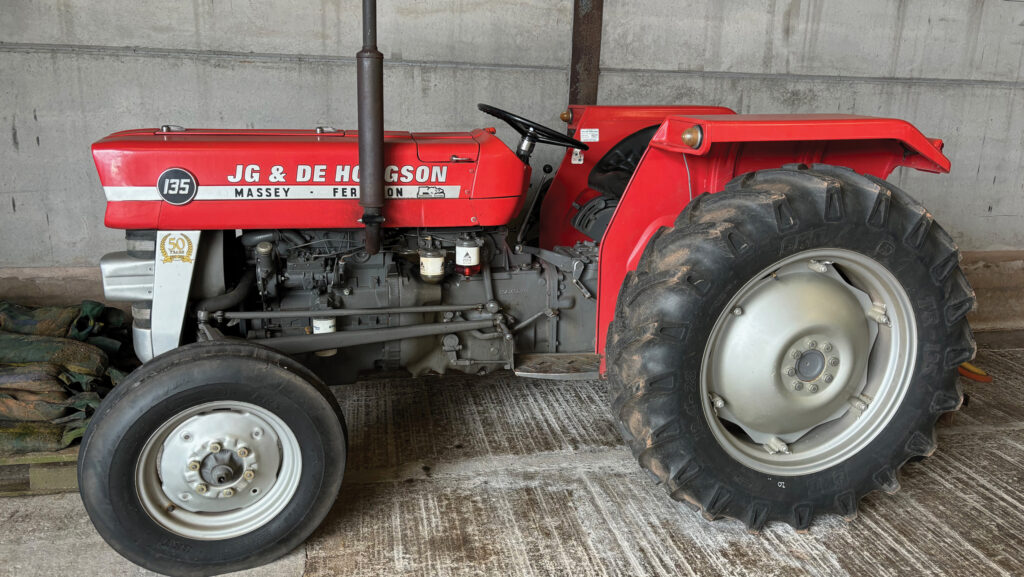
© James Andrews
It’s no coincidence that Massey Ferguson’s 135 is one of the most sought-after classic tractors in the UK.
Launched in 1964, it took the ethos of the TE20, 35 and 35X that went before, updated and repackaged it, and created one of the most accomplished tractors of its time.
Not only that, but thousands are still in regular use to this day, either putting in the hard graft with a muckscraper in tow or carrying out lighter duties such as topping paddocks on a small holding.
One of the standout features is its 45hp three-cylinder Perkins engine, which is simple, reliable and a good starter.
But the popular six-speed manual transmission with two reverse gears is equally dependable.
Later models had an eight-speeder and there was the option of a 12-ratio multi-power box, which lacks engine braking in the low setting.
The 135 was a huge sales success and some 413,153 rolled off the Banner Lane line in Coventry before production came to an end in 1979.
Other contenders: Ford 5000, David Brown 990, John Deere 4020, County Super 6
1970s: Ford 6600
- Year launched 1975
- Engine 4.2-litre naturally aspirated four-cylinder diesel
- Power 78hp
- Transmission Eight- or 16-speed manual
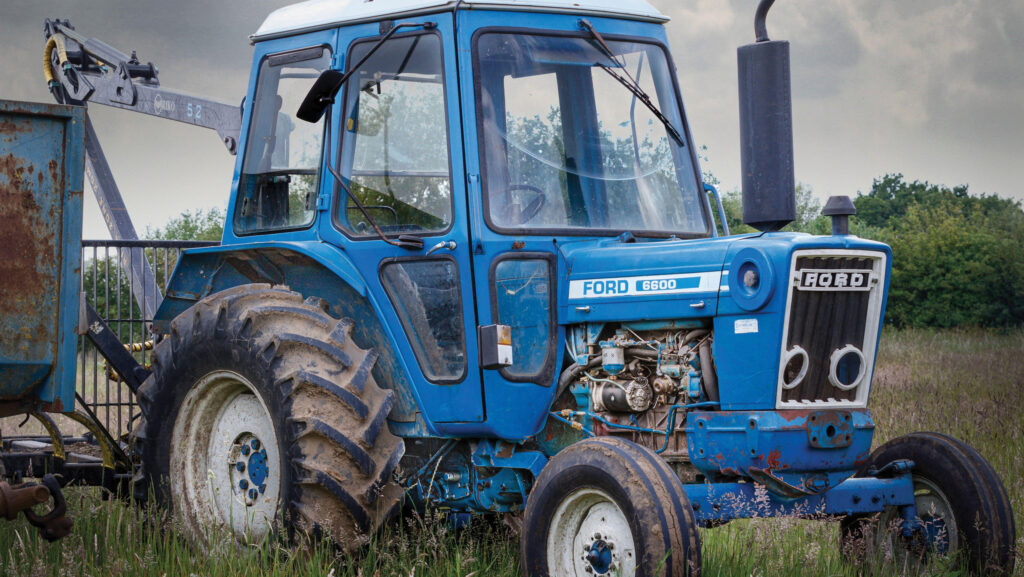
© Andrew Lankester/Alamy Stock Photo
Drafted in to replace the popular 5000, the 6600 sold in prodigious numbers and helped cement Ford’s position at the top of the UK sales chart.
Although not available from launch, this model would be one of the first to be fitted with Ford’s innovative Q (quiet) cab.
Introduced on tractors built from 1976 onwards, this kept noise levels below the new government maximum of 90dB and its curved windscreen earned it the “bubble cab” nickname.
Despite this relatively modern addition, the 6600 was blissfully simple with minimal electrics making it easy to keep running on a budget.
Delivering 78hp from its four-cylinder naturally aspirated engine, it was also powerful enough to carry out front-line tasks on many farms yet compact enough to be used on a scraper around the yard.
For these reasons, it remains a usable tractor to this day.
Most 6600s were two-wheel drive, but four-wheel drive was growing in popularity by this time and various front axle conversion kits were available.
Other contenders: International Harvester 1055, John Deere 3130, David Brown 1212, Zetor Crystal 12011, Muir Hill 161
1980s: Ford 7810
- Year launched 1988
- Engine 6.6-litre, six-cylinder naturally aspirated diesel
- Power 103hp
- Transmission Eight- or 16-speed manual
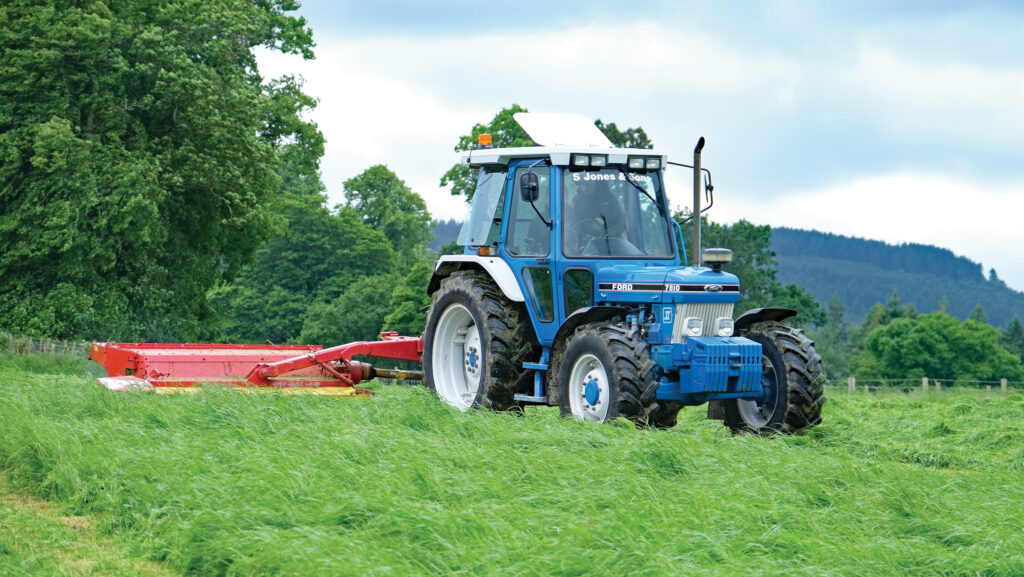
© James Andrews
Carrying the crown for the 1980s is another stalwart from Ford’s era of dominance – the highly desirable Basildon-built 7810.
From its launch in 1988, this was a hugely popular tractor, sporting a 103hp naturally aspirated six-cylinder engine, slotted into a compact chassis.
Allied to a synchromesh gearbox with optional Dual Power two-speed powershift, it also has plenty of ratios for putting that power to good use.
Unlike the earlier turbocharged four-cylinder 7610, it offered plenty of torque and low-end power, as well as a slightly longer wheelbase that improved grip for draft work. Optional factory-fitted four-wheel drive also added to its in-field prowess.
As for operator comfort, the Super Q cab provided a civilised workspace with a flat floor, neat side-mounted gear levers and the option of air conditioning.
Though spartan by modern standards, it gave a flavour of what was about to come with a digital dashboard replacing the analogue gauges of earlier Ford tractors.
Come 1989, updated Series III versions were introduced, along with a special edition Silver Jubilee model. Though unpopular at the time, it’s now the one to have.
Other contenders International Harvester 1455XL, John Deere 3050, Ford TW35, Mercedes MB Trac, Caterpillar Challenger 65
1990s: John Deere 7810
- Year launched 1996
- Engine 8.1-litre, six-cylinder turbo diesel
- Power 175hp
- Transmission PowrQuad, AutoQuad or Powershift
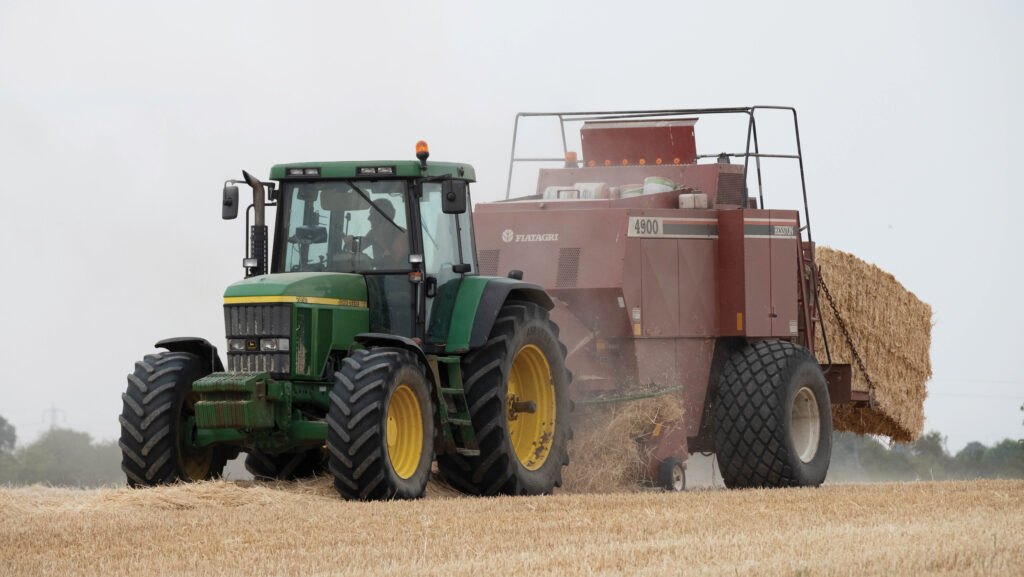
©Tim Scrivener
Powered by that legendary 8.1-litre “Waterloo engine”, the 7810 is thought of by many as the finest tractor John Deere has ever produced.
Launched in 1996, it came at a time when the firm was accelerating its influence on the UK tractor market.
And although the smaller 6000-series accounted for a far larger portion of sales, the 7810 was, and still is, the model scores of farmers aspire to have.
Time has only reinforced this appeal, as it’s proved to be a solid and reliable source of power.
It can still hold its own among much more modern machines, and many examples are still putting in the hard yards with fairly large farms and contracting businesses.
Power was 175hp as standard, although many have been pushed over 200hp, and later models came with a common rail injection system to help meet emissions regulations.
These are generally the most desirable examples, particularly those fitted with the AutoQuad semi-powershift gearbox, left hand reverser and TLS front suspension system.
Production of the 7810 continued until 2003 when it was replaced by the more ungainly 7820.
Other contenders Case IH Maxxum 5150, John Deere 6910, Massey Ferguson 3085, Fiat 110-90, Ford 8340
2000s: John Deere 7530
- Year launched 2006
- Engine 6.8-litre, six-cylinder turbo diesel
- Power 180hp/195hp
- Transmission AutoQuad or AutoPowr
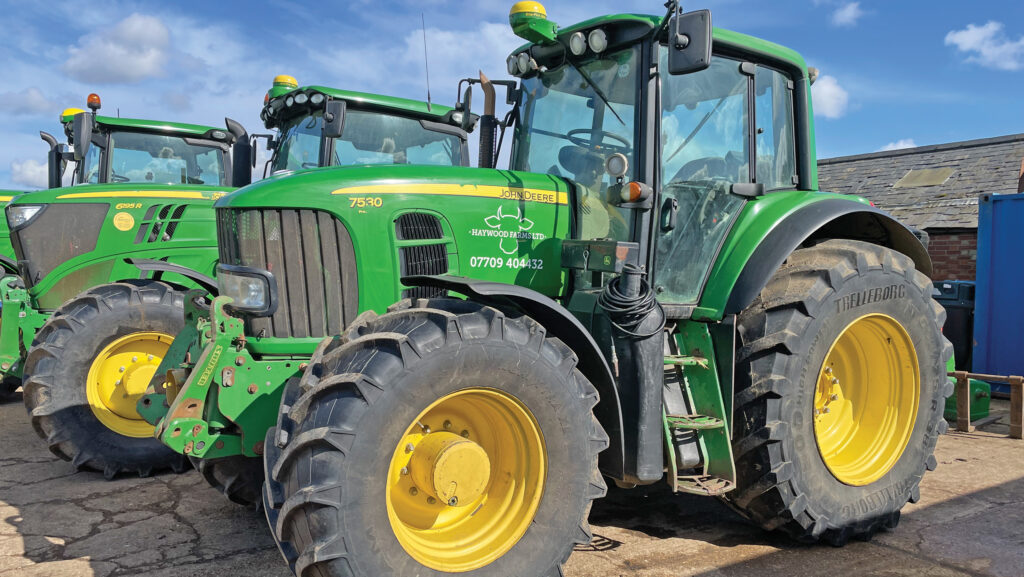
© James Andrews
Left with a yawning gap between the neatly proportioned 6920 and its heavyweight US-built cousins, John Deere needed to find a way of filling it.
So, when the updated 6030 series came along in 2006, it bolted on two larger framed and more powerful versions – the 7430 and the 7530.
These shared many of the same underpinnings as their smaller siblings, but the power from the 6.8-litre engine was pushed to just under 200hp with boost.
Although unremarkable at the time of launch, the 7530 has proved to be a highly capable tractor; one that’s still top of the shopping list for numerous farms and contractors in the UK.
Many have been remapped or chipped to well over 200hp and they’ve managed to clock sky-high hour counts while doing so.
Their relative simplicity compared with the R-series tractors that followed make them simpler to fix and, although they’re fitted with an exhaust gas recirculation system, they don’t have the added complexity of AdBlue.
Transmission options include the doggedly reliable AutoQuad semi-powershift and the smooth AutoPowr CVT.
Other contenders Fendt 820, Massey Ferguson 6480, New Holland TM155, JCB Fastrac 2170, Deutz-Fahr Agrotron 165.7
2010s: Fendt 724
- Year launched 2011
- Engine 6.1-litre, six-cylinder Deutz turbo diesel
- Power 240hp
- Transmission Vario continuously variable
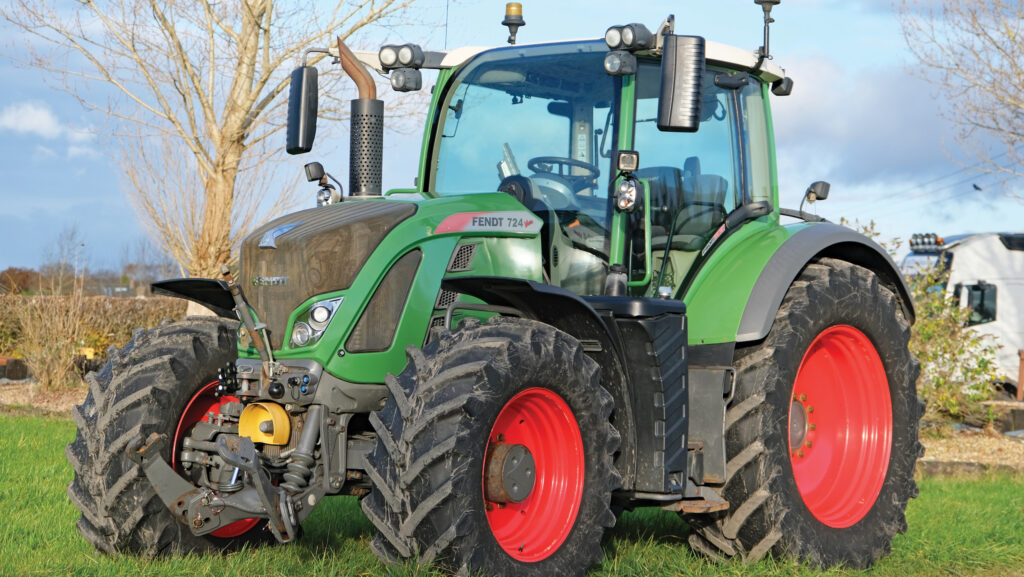
© James Andrews
Following in the footsteps of the highly capable 820, Fendt’s compact-yet-powerful 724 helped the brand significantly bolster its share of the UK tractor market.
A favourite among contractors and larger farms, it packs 240hp into a frame no larger than many brands’ sub-200hp machines.
Added to that, it set new standards for the level of technology expected on a modern tractor, which took other manufacturers years to compete with.
The marked rise in the acceptance of continuously variable transmissions in this country can also be partly credited to the 724, and other popular Fendt models such as the 828.
In fact, such has been the success of the ML180 Vario that it’s made its way into several other brands of tractor.
A handful of updates were introduced during the 724’s build run, but the most significant came in 2020, with a swish new control layout.
So successful is this generation of 724 that Fendt continued selling them alongside the new 700-series that was introduced in 2022.
Other contenders John Deere 6155R, JCB Fastrac 4220, Case IH Puma 240, Massey Ferguson 7724S, Valtra N174
2020s: John Deere 6R 250
- Year launched 2021
- Engine 6.8-litre, six-cylinder turbo diesel
- Power 275hp/301hp
- Transmission AutoPowr continuously variable
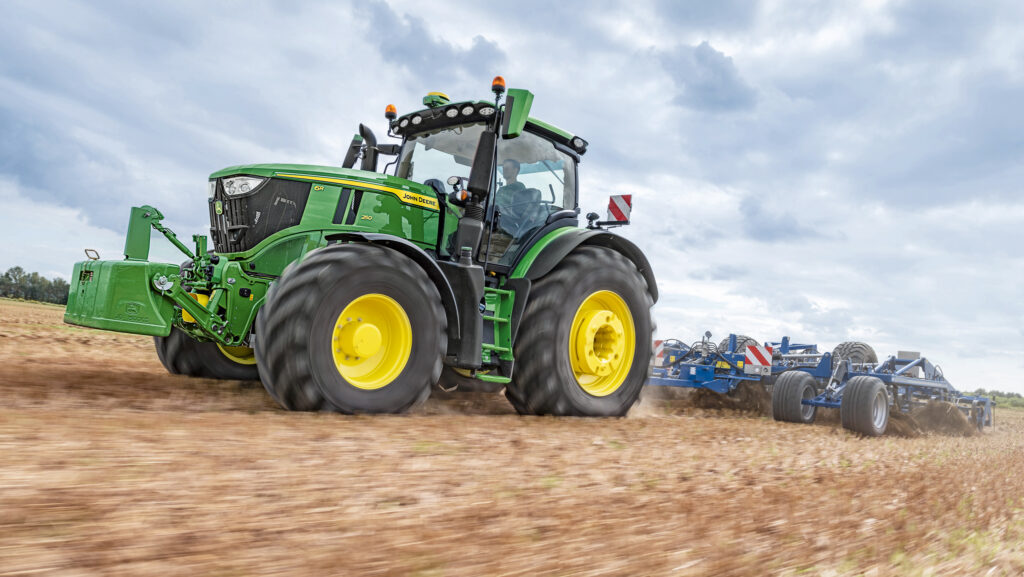
© John Deere
As we’re only four years into the 2020s, it’s a little early to predict which, if any, will be the must-have classics of the future. But based on your votes, John Deere’s flagship Mannheim-built tractor, the 6R 250, is the front runner.
Much of this tractor’s DNA can be traced back to the first 6000-series models introduced by the firm in the early 1990s – it still features a full frame chassis, a 6.8-litre six-cylinder engine and a ZF-built AutoPowr CVT transmission, which came in with the 6010 range in 1999. Yet it’s also a completely different beast.
Almost every aspect has been beefed up to take the extra power, the ultra-quiet, modern cab is a world apart, and it’s packed with the latest high-end technology.
The question is, will this be one of the models to cement John Deere’s market-leading position, or is there a plucky rival waiting in the wings ready to propel another manufacturer to the top spot?
Other contenders Fendt 728, Massey Ferguson 7S.210, New Holland T7.300, Case IH Quadtrac 715, Valtra Q305
With thanks to…
Thanks to the following experts for helping put this article together:
- Mark Hellier, Mark Hellier Tractors
- Richard Parris, Parris Tractors
- David Rawlings, Brimfield Vintage Club
- John Tomkinson, JR Tomkinson & Sons

